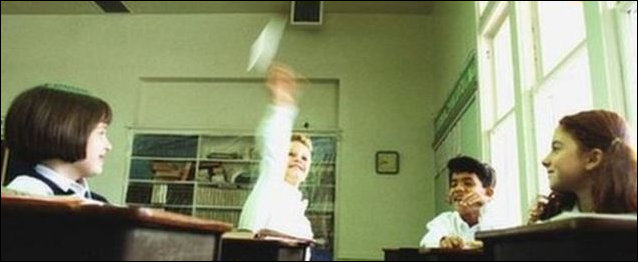It would seem to be a common sense idea that putting disruptive students in classrooms would negatively impact the learning experience of the other students. But common sense rarely prevails against ideology, especially one as powerful and pervasive as the social justice movement to stamp out racial disparities in the rate of suspensions and other punishments in Virginia schools.
Based on common sense, I have argued that new justice-driven disciplinary policies, which define disruptive students as “victims” and keep them in class, creates a new group of victims — their classmates. Now comes rigorous academic research that quantifies the impact.
In a study published in the American Economic Review, “The Long-Run Effects of Disruptive Peers,” Scott E. Carrell, Mark Hoekstra, and Elira Kura exploited a longitudinal database of Alachua County, Fla., schools to track what happened to students exposed to disruptive students. The main conclusions:
- Exposure to a single disruptive peer through five years of elementary school has lasting effects. By age 24 to 28, classmates’ earnings are 3 percent lower than they would be otherwise.
- One year’s exposure to a disruptive student in a class of 25 reduces the discounted value of classmates’ earnings by $80,000.
- Increased exposure to disruptive peers by children from lower relative-income families compared to higher-income households explains about 5 percent of the rich-poor earnings gap in adulthood.
“While there are negative affects across the income distribution, the largest effects are on those individuals who earn less than $40,000 annually,” states the study. “The larger impact is to move individuals from the middle of the income distribution to the lower part of the income distribution.”
Bacon’s bottom line: The authors do not comment upon the social-justice disciplinary paradigm being foisted on Virginia schools and schools nationally. Nor do they advance recommendations on how to deal with disruptive students. But the study makes it crystal clear that students pay a price — diminished education, lower test scores, and reduced income — when classmates create distractions and cut into teaching time.
In many instances, the disruptive students are victims — typically of domestic violence. There is an ample academic literature showing the children exposed to domestic violence are more likely to display aggressive behavior, bullying, depression, animal cruelty, academic performance, and violence in adulthood. So, it’s not as if these kids don’t warrant some special consideration. But school disciplinary policies must acknowledge that keeping disruptive students in mainstream classes comes at a significant cost to their peers. Indeed, the failure to remove disruptive students from classrooms is a significant engine of social and economic inequality.
There may be a cost to providing special educational arrangements for disruptive students, but there is a significant cost for not providing those arrangements.


Leave a Reply
You must be logged in to post a comment.